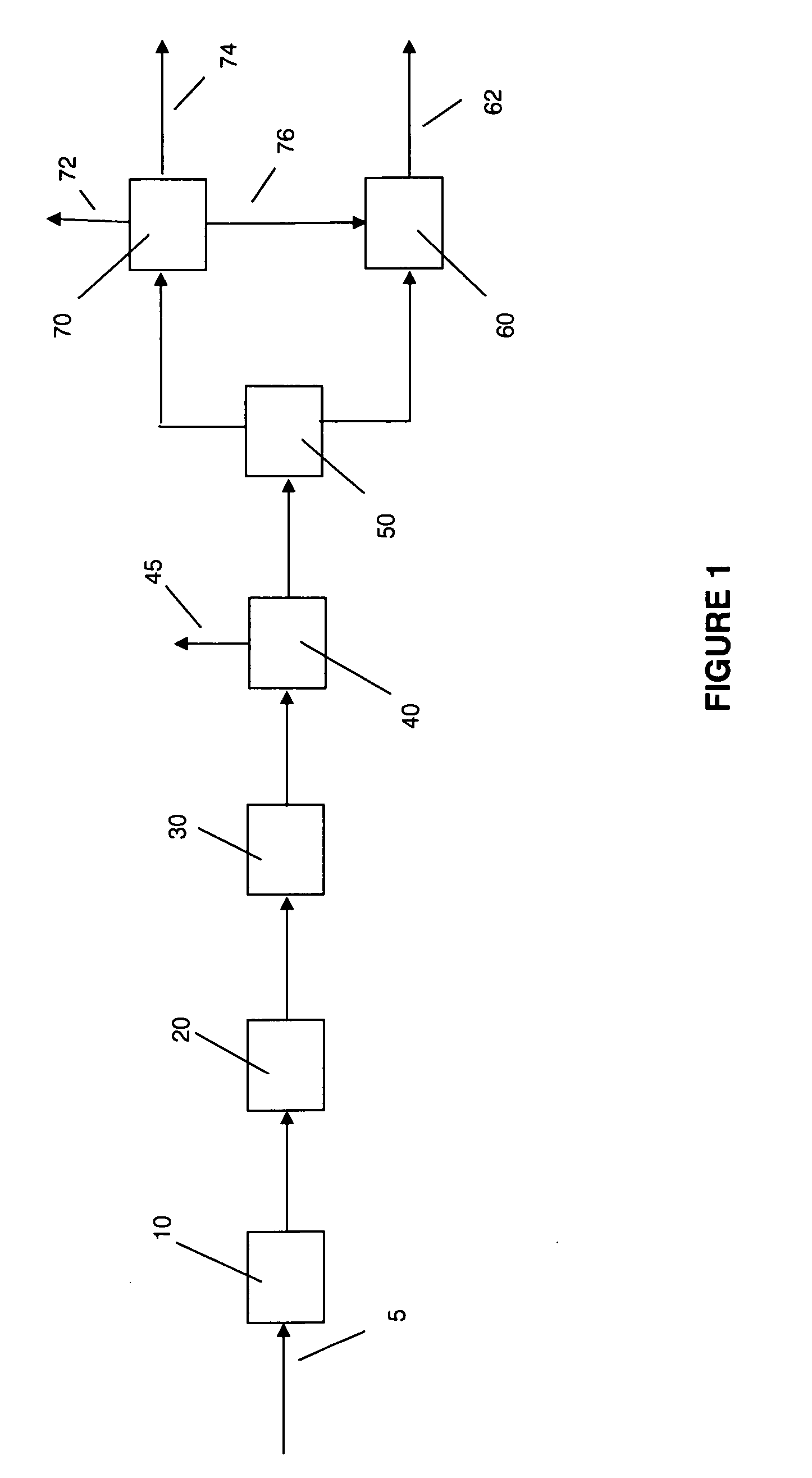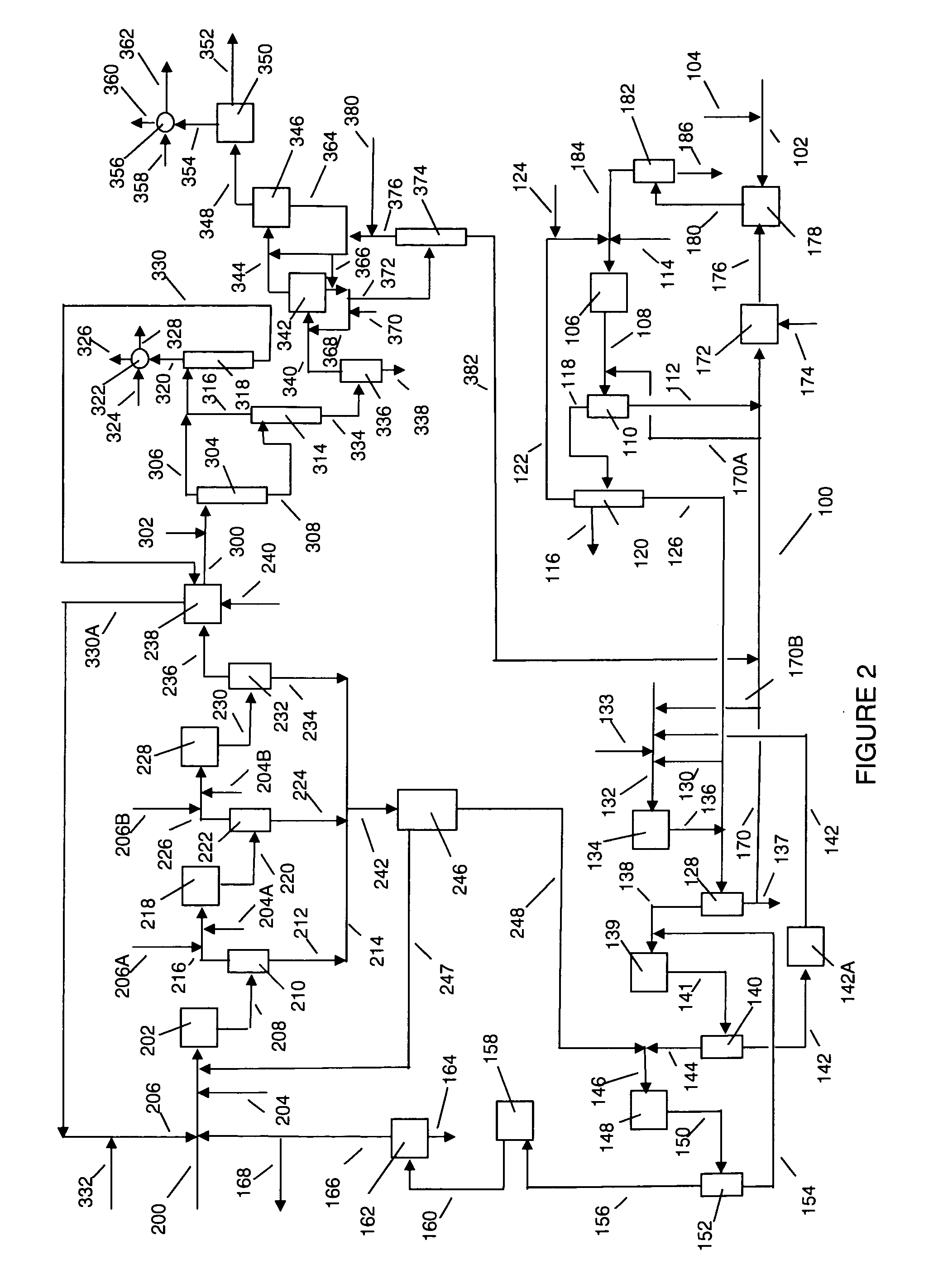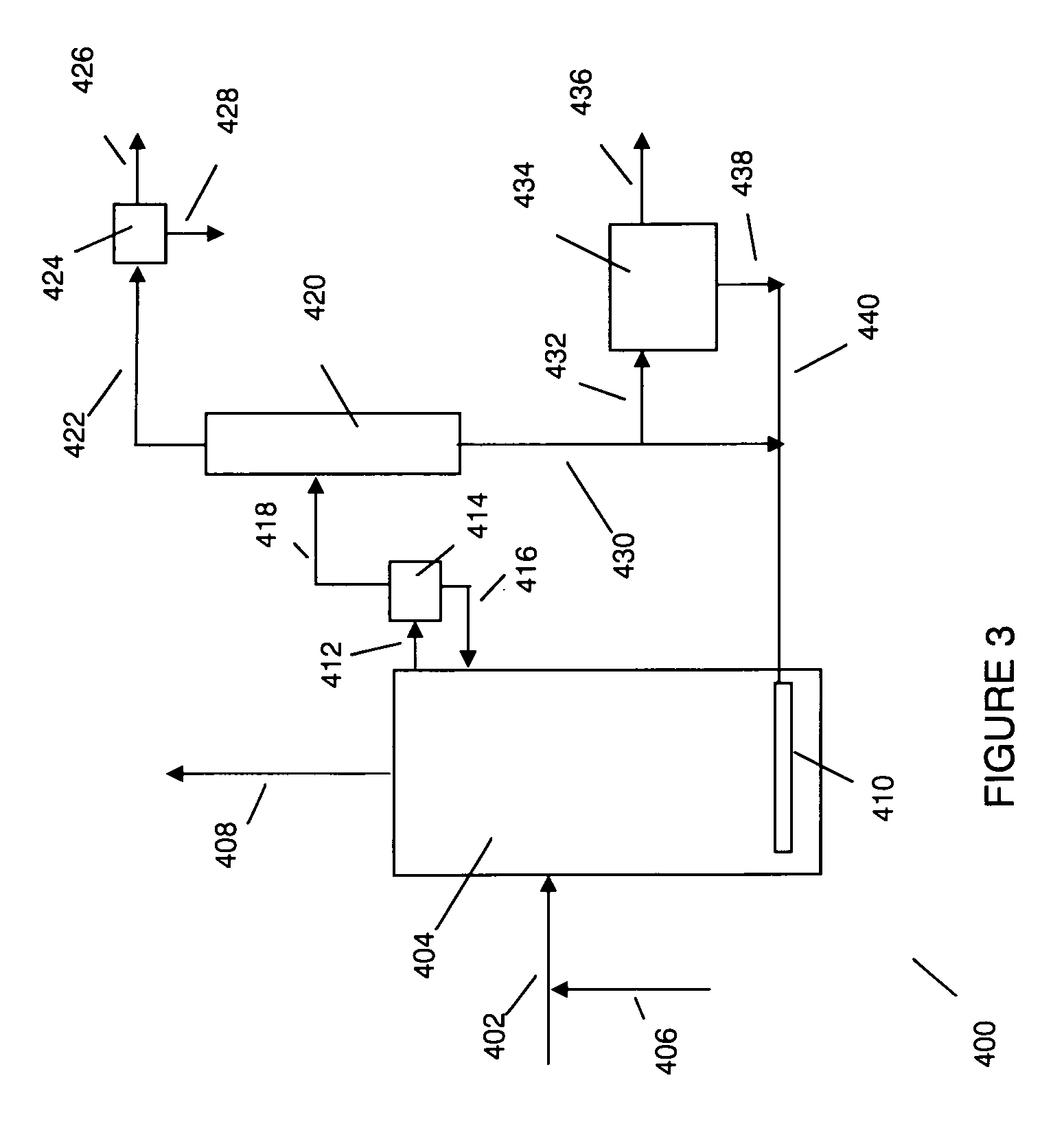Integrated glyceride extraction and biodiesel production processes
- Summary
- Abstract
- Description
- Claims
- Application Information
AI Technical Summary
Benefits of technology
Problems solved by technology
Method used
Image
Examples
examples
[0172]The following example is by way of illustration of the invention and is not intended to be in limitation thereof.
[0173]A syrup is obtained from an evaporation stage removing water from thin stillage from an ethanol plant. The syrup is highly viscous and contains about 5.5 mass percent glycerides and free fatty acids. A first portion is centrifuged at about 70° C. for 20 minutes and an oil phase containing about 55 mass percent of the oil in the syrup is obtained. A second portion of the syrup is contacted with 10 parts by mass biodiesel and stirred to form a liquid dispersion. Due to the hydrophobic nature of the biodiesel, the dispersion is poorly formed. The liquid is centrifuged at about 70° C. for 20 minutes and an oil phase containing about 75 mass percent of the oil in the syrup is obtained.
PUM
| Property | Measurement | Unit |
|---|---|---|
| Phase | aaaaa | aaaaa |
| Evaporation enthalpy | aaaaa | aaaaa |
Abstract
Description
Claims
Application Information
 Login to View More
Login to View More - R&D
- Intellectual Property
- Life Sciences
- Materials
- Tech Scout
- Unparalleled Data Quality
- Higher Quality Content
- 60% Fewer Hallucinations
Browse by: Latest US Patents, China's latest patents, Technical Efficacy Thesaurus, Application Domain, Technology Topic, Popular Technical Reports.
© 2025 PatSnap. All rights reserved.Legal|Privacy policy|Modern Slavery Act Transparency Statement|Sitemap|About US| Contact US: help@patsnap.com



